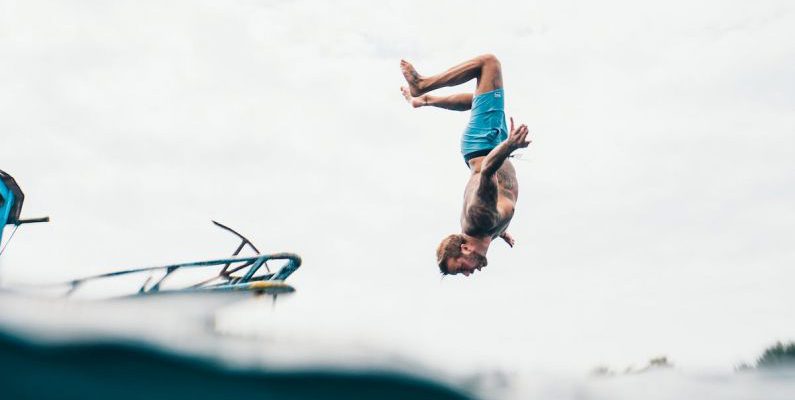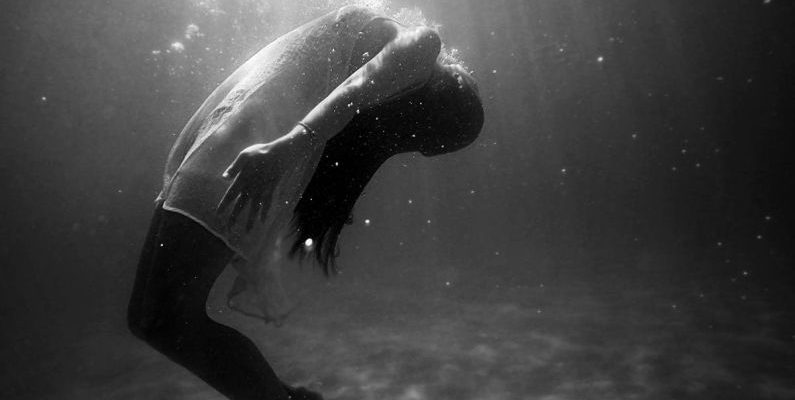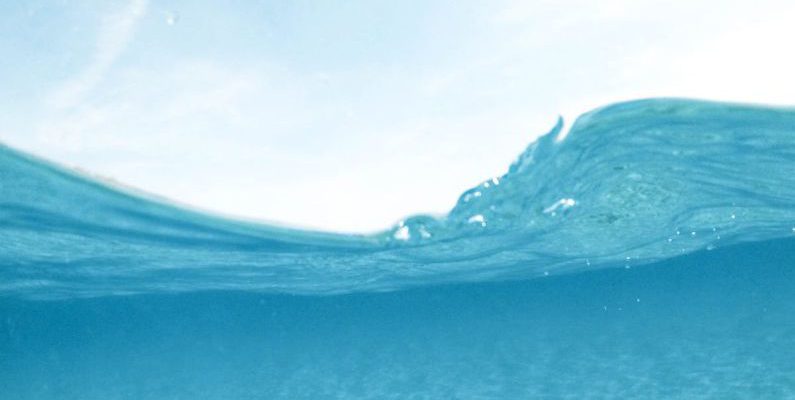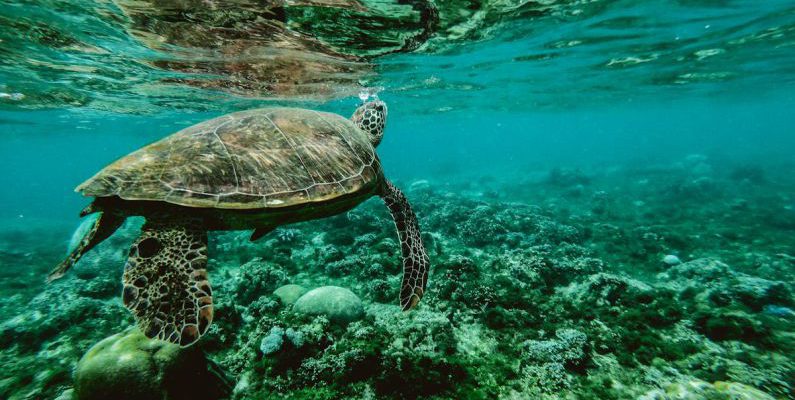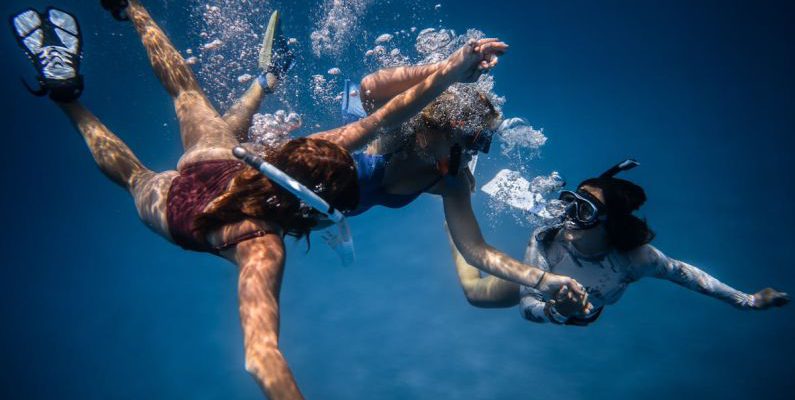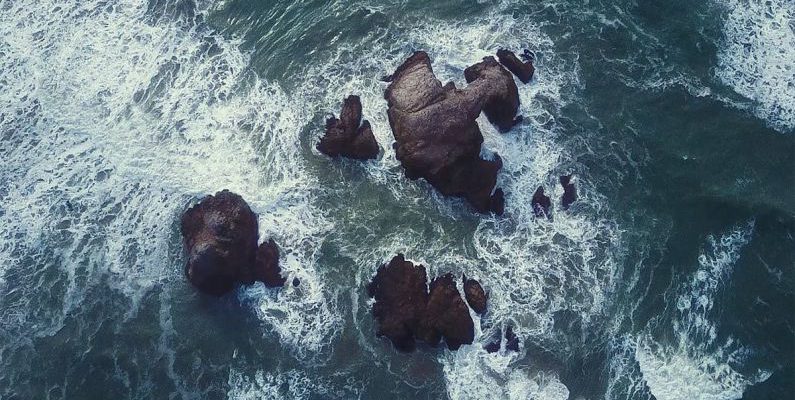Exploring the underwater world can be an exhilarating and rewarding experience, but it's essential to prioritize safety when engaging in scuba diving. For those looking to enhance their skills and be prepared for emergency situations while diving, undergoing rescue diver training is a crucial step. This training equips divers with the knowledge and skills needed to assist others in distress, making it a valuable asset for anyone serious about diving. If you're considering enrolling in rescue diver training, here's what you can expect from the experience.
**Prerequisites for Rescue Diver Training**
Before enrolling in rescue diver training, individuals must meet certain prerequisites to ensure they have the necessary diving experience and skills. Typically, candidates must hold an advanced open water diver certification or equivalent, have completed a CPR and first aid training within the last two years, and have logged a minimum number of dives, often ranging from 20 to 50 dives. These prerequisites ensure that candidates have a solid foundation of diving knowledge and experience before embarking on rescue diver training.
**Classroom Instruction**
Rescue diver training typically begins with classroom instruction, where divers learn about dive theories, dive planning, dive tables, and dive safety protocols. In the classroom, instructors cover topics such as recognizing and managing stress in divers, responding to diving emergencies, and practicing self-rescue techniques. Divers also learn about equipment maintenance, emergency oxygen administration, and how to conduct rescue scenarios effectively.
**Skill Development in Confined Water**
After completing the classroom portion, divers move on to confined water sessions, where they practice and refine essential rescue skills in a controlled environment. In confined water, divers learn how to assist a distressed diver at the surface, perform rescue breaths, and tow an unresponsive diver to safety. These hands-on exercises help divers build confidence in their abilities and ensure they can effectively respond to emergencies underwater.
**Open Water Scenarios**
Once divers have mastered the necessary skills in confined water, they progress to open water scenarios to apply their knowledge in real-life diving situations. In open water, divers practice search and recovery techniques, conduct simulated rescue missions, and work together as a team to respond to various emergency scenarios. These scenarios challenge divers to think quickly, make decisions under pressure, and demonstrate their ability to handle complex rescue situations.
**Emphasis on Prevention and Preparedness**
While rescue diver training focuses on responding to diving emergencies, it also emphasizes the importance of prevention and preparedness. Divers learn how to recognize potential risks before they escalate into emergencies, conduct thorough dive briefings, and ensure that all divers in the group are aware of emergency procedures. By promoting a proactive approach to safety, rescue diver training helps divers prevent accidents and minimize the likelihood of emergencies occurring in the first place.
**Continuing Education and Practice**
Rescue diver training is not just a one-time course; it is an ongoing commitment to improving your skills and staying prepared for any diving situation. Divers are encouraged to continue their education by taking advanced courses, participating in rescue drills, and practicing their rescue skills regularly. By staying engaged and honing their abilities, divers can maintain their readiness to assist others in need and contribute to a safer diving community.
**Preparing for the Unexpected: The Value of Rescue Diver Training**
In the unpredictable underwater world, being prepared for the unexpected is essential for every diver. Rescue diver training provides divers with the knowledge, skills, and confidence to respond effectively to emergencies and assist others in distress. By undergoing rescue diver training, divers not only enhance their own safety but also contribute to a culture of preparedness and responsibility within the diving community. Whether you're a recreational diver looking to expand your skills or a professional diver seeking to advance your career, rescue diver training offers valuable insights and practical experience that can make a significant difference in your diving journey.
Training Tips
Venturing underwater can be an exhilarating experience, but it comes with its own set of risks. From unexpected currents to equipment malfunctions, divers must always be prepared for the unexpected. One of the most crucial skills for any diver to possess is the ability to remain calm and collected in the face of danger. In this article, we will explore some essential survival tips to help you avoid panic underwater and ensure a safe diving experience.
Understanding the Importance of Remaining Calm
When faced with a potentially dangerous situation underwater, panic is your worst enemy. It can cloud your judgment, impair your decision-making abilities, and ultimately lead to disastrous consequences. By learning how to stay calm under pressure, you can increase your chances of survival and effectively manage challenging situations.Control Your Breathing
One of the first things to do when you feel a surge of panic is to focus on your breathing. Rapid, shallow breaths can escalate feelings of anxiety and panic. Instead, take slow, deep breaths to help calm your mind and body. Practice deep breathing techniques regularly to build a natural response to stress and anxiety.Stay Positive and Visualize Success
Maintaining a positive mindset can make a world of difference in a crisis. Instead of dwelling on negative thoughts or worst-case scenarios, visualize a successful outcome. Envision yourself overcoming the challenge at hand and focus on positive affirmations to boost your confidence and resilience.Stay Mindful of Your Surroundings
Being aware of your environment is essential for effective problem-solving underwater. Stay mindful of your surroundings, monitor your depth, air supply, and dive buddy's location. By staying present and attentive, you can anticipate potential risks and take proactive measures to address them before they escalate.Use Underwater Signaling Devices
In situations where verbal communication is impossible, signaling devices can be lifesaving tools. Carry a whistle, signal mirror, or surface marker buoy to attract attention or communicate distress signals to your dive buddy or the surface support team. Practice using these devices before your dive to ensure you are familiar with their operation in an emergency.Stay Close to Your Dive Buddy
Diving with a buddy is a fundamental safety practice that can greatly reduce the risks associated with underwater emergencies. Your dive buddy is your lifeline in times of need, providing assistance and support when you need it most. Stay close to your buddy, maintain visual contact, and establish clear communication signals before entering the water.Prepare for Equipment Malfunctions
Equipment malfunctions can happen unexpectedly, but being prepared can help you handle them effectively. Familiarize yourself with your gear, perform regular maintenance checks, and carry spare parts or backup equipment when possible. Practice emergency procedures, such as regulator recovery and mask clearing, to build confidence in your ability to manage equipment failures.Seek Professional Training and Certification
Proper training and certification are essential for safe diving practices. Enroll in reputable dive courses to learn essential skills, safety protocols, and emergency procedures. Regularly refresh your knowledge and skills through continuing education courses to stay up-to-date with the latest advancements in diving practices and equipment.Conclusion: Embracing a Calm and Prepared Mindset
Navigating the underwater world comes with its own set of challenges, but with the right mindset and preparation, you can mitigate risks and ensure a safe and enjoyable diving experience. By mastering the art of staying calm under pressure, practicing essential skills, and staying vigilant of your surroundings, you can confidently explore the wonders beneath the surface while prioritizing your safety and well-being. Remember, preparation is key, and a calm and collected mindset can be your greatest asset in times of crisis.
Diving is a thrilling and rewarding experience that allows us to explore the wonders of the underwater world. Whether you are a beginner or an experienced diver, adding yoga to your routine can significantly enhance your diving skills and overall diving experience. The practice of yoga offers numerous physical and mental benefits that can help you improve your diving performance and enjoyment. Let's delve into how incorporating yoga into your routine can take your diving skills to the next level.
Enhanced Flexibility and Mobility
One of the key benefits of practicing yoga for diving is improved flexibility and mobility. Diving requires a wide range of motion in your joints, especially in the hips, shoulders, and spine. By regularly practicing yoga, you can increase your flexibility and range of motion in these key areas, allowing you to move more freely underwater. Poses such as the Downward Dog, Cobra Pose, and Pigeon Pose can help to stretch and open up tight muscles, making it easier for you to navigate the water with grace and ease.Improved Breathing Techniques
Proper breathing is essential for diving, as it helps you conserve energy, stay calm, and maintain buoyancy underwater. Yoga places a strong emphasis on breath awareness and control, teaching you how to breathe deeply and mindfully. By incorporating pranayama (breathwork) into your yoga practice, you can improve your lung capacity, enhance your breathing efficiency, and learn how to breathe in a more relaxed and controlled manner. These breathing techniques can be invaluable when you are underwater, helping you stay calm and focused in challenging diving situations.Strength and Endurance
Diving can be physically demanding, requiring strength and endurance to navigate currents, carry equipment, and maintain proper buoyancy. Yoga is an excellent way to build strength in your core, arms, legs, and back, all of which are essential for diving. Poses like Plank, Warrior II, and Boat Pose can help you develop the muscular strength needed to support your body and equipment underwater. Additionally, the flowing sequences and holds in yoga poses can help improve your endurance, allowing you to stay active and alert during longer dives.Mental Clarity and Focus
Clear mental focus is crucial for safe and enjoyable diving. Yoga is not just a physical practice; it also cultivates mental clarity, focus, and mindfulness. Through meditation and mindfulness practices in yoga, you can train your mind to stay present and focused, both on and off the mat. This mental discipline can be incredibly beneficial for diving, as it can help you stay calm, make quick decisions, and react effectively to changing underwater conditions. By incorporating yoga into your routine, you can enhance your mental resilience and concentration, ensuring a more enjoyable and safe diving experience.Stress Reduction and Relaxation
Diving can be an exhilarating but also stressful activity, especially for those new to the sport. Yoga offers a holistic approach to stress reduction, helping you relax your body and calm your mind. The deep breathing, gentle movements, and relaxation techniques in yoga can help lower your stress levels, reduce anxiety, and promote a sense of inner peace and tranquility. By incorporating yoga into your pre-dive routine, you can prepare your body and mind for the challenges of diving, allowing you to approach each dive with a sense of calm and serenity.Final Thoughts
In conclusion, the practice of yoga can be a valuable tool for divers looking to enhance their skills and enjoyment underwater. From improved flexibility and strength to enhanced breathing techniques and mental focus, yoga offers a wide range of benefits that can take your diving to the next level. By incorporating yoga into your routine, you can prepare your body and mind for the challenges of diving, ensuring a safe, enjoyable, and fulfilling underwater experience. So, roll out your mat, take a deep breath, and dive into the transformative power of yoga for divers.
Diving is an exhilarating activity that allows individuals to explore the underwater world and experience the beauty of marine life up close. However, behind the thrill and adventure of diving lies a fascinating interplay of physics and physiology that govern the way our bodies interact with the underwater environment.
**Buoyancy and Archimedes' Principle**
One of the fundamental principles of physics that comes into play when diving is buoyancy. Buoyancy is the upward force exerted by a fluid that opposes the weight of an immersed object. When a diver enters the water, their body displaces an amount of water equal to their body's volume. According to Archimedes' Principle, the buoyant force acting on an object in a fluid is equal to the weight of the fluid displaced by the object. This principle explains why objects float or sink in water based on their density relative to the water.
**Pressure and Boyle's Law**
As a diver descends deeper into the water, the pressure exerted by the water increases. This is because the weight of the water above the diver creates pressure at greater depths. The increase in pressure affects the volume of air in the diver's lungs and other air spaces in the body. Boyle's Law states that the pressure of a gas is inversely proportional to its volume when the temperature is constant. Therefore, as the pressure increases with depth, the volume of air in the diver's lungs decreases. Divers must equalize this pressure by exhaling air from their lungs or using specialized equipment to prevent discomfort or injury.
**Gas Laws and Decompression Sickness**
The effects of pressure on the body become particularly crucial when considering the risks of decompression sickness, also known as "the bends." Decompression sickness occurs when dissolved gases, primarily nitrogen, come out of solution and form bubbles in the body tissues and bloodstream. This can happen if a diver ascends too quickly, causing a rapid decrease in pressure and inadequate time for the nitrogen to be safely eliminated from the body. Understanding the gas laws that govern the behavior of gases under pressure is essential for divers to plan their dives properly, ascend at a safe rate, and prevent decompression sickness.
**Respiration and Oxygen Toxicity**
Breathing compressed air while diving introduces another physiological consideration: oxygen toxicity. Oxygen toxicity can occur when a diver breathes high concentrations of oxygen at increased pressures, such as during deep dives or prolonged exposures to enriched air mixes. High levels of oxygen can lead to seizures and other life-threatening complications. Divers must be aware of their oxygen exposure limits and adhere to safe diving practices to minimize the risk of oxygen toxicity.
**Thermal Effects and Hypothermia**
In addition to pressure and gas considerations, divers must also contend with the thermal effects of water temperature. Water conducts heat more efficiently than air, making divers susceptible to hypothermia, especially in cold water environments. Hypothermia occurs when the body loses heat faster than it can produce it, leading to a dangerous drop in core body temperature. Proper thermal protection, such as wetsuits or drysuits, is essential for divers to regulate their body temperature and prevent hypothermia during prolonged dives.
**Adaptations and Training**
Despite the challenges posed by the physics and physiology of diving, the human body possesses remarkable capabilities to adapt to the underwater environment. Through specialized training and experience, divers can learn to manage their buoyancy, breathing, and other physiological responses to optimize their diving performance and safety. By understanding the principles that govern diving, divers can enhance their skills, explore the depths with confidence, and enjoy the wonders of the underwater world responsibly.
In conclusion, diving is a unique activity that blends the principles of physics and physiology in a dynamic underwater setting. By grasping the concepts of buoyancy, pressure, gas laws, and thermal effects, divers can navigate the underwater world with a deeper understanding of how their bodies interact with the aquatic environment. Through education, training, and adherence to safe diving practices, divers can embark on exciting underwater adventures while prioritizing their safety and well-being.
Navigating underwater can be a thrilling yet challenging endeavor for divers of all levels. Perfecting your dive navigation skills is essential for a safe and enjoyable underwater experience. Whether you are exploring a new dive site or trying to find your way back to the boat, mastering navigation techniques is key. In this guide, we will explore the top tips and strategies to help you improve your dive navigation skills.
Understanding Underwater Navigation
Before diving into the specifics of navigation techniques, it is important to have a solid understanding of how underwater navigation works. Unlike on land, where you can rely on landmarks and signs, underwater navigation requires a different set of skills. Visibility can be limited, and natural currents can make it challenging to maintain a straight course. Understanding how to use a compass, natural cues, and your surroundings is crucial for successful navigation underwater.Utilizing a Dive Compass
A dive compass is a vital tool for any diver looking to improve their navigation skills. Familiarize yourself with how to properly use a compass before your dive. Ensure that your compass is in good working condition and that you know how to read it accurately underwater. Practice using your compass on land before attempting to navigate underwater. Remember that maintaining a level position is key to accurate compass readings.Natural Navigation Cues
In addition to using a dive compass, paying attention to natural navigation cues can help you orient yourself underwater. Look for features such as rock formations, coral reefs, and marine life that can serve as reference points during your dive. Remember that these cues can change depending on the current, so it is important to continually reassess your surroundings as you navigate. By combining your compass skills with natural navigation cues, you can improve your overall navigation accuracy.Practice Underwater Navigation
The old adage "practice makes perfect" holds true when it comes to improving your dive navigation skills. Take every opportunity to practice your navigation techniques during your dives. Start with simple navigation exercises in clear, calm waters before progressing to more challenging environments. Practice navigating using different methods, such as dead reckoning and reciprocal headings, to improve your overall proficiency. The more you practice, the more confident you will become in your ability to navigate underwater.Navigating Drift Dives
Drift dives present a unique set of challenges for divers, as the current can carry you along with little effort on your part. To navigate a drift dive successfully, it is essential to maintain situational awareness and constantly monitor your surroundings. Use your compass to determine your heading and adjust your position as needed to stay on course. Remember to communicate with your dive buddy and dive leader to ensure that everyone stays together during the dive.Emergency Navigation Techniques
In the event that you become disoriented or lose sight of your dive group, having emergency navigation techniques at your disposal is crucial. Practice using natural cues such as the sun's position or the direction of the current to help you find your way back to safety. Remember to remain calm and avoid making sudden movements that can further disorient you. If needed, deploy a surface marker buoy to signal your location to the dive boat or surface support.Mastering Underwater Mapping
Creating a mental map of the dive site can greatly enhance your navigation skills. Pay attention to key features such as entry and exit points, notable landmarks, and underwater terrain. By visualizing the dive site in your mind, you can better navigate your way through the underwater environment. Share your observations and insights with your dive buddies to improve the overall navigation experience for everyone.Enhancing Your Navigation Skills
Continuous learning and improvement are essential for mastering dive navigation skills. Take advanced navigation courses to further develop your skills and learn new techniques. Stay updated on the latest navigation tools and technologies that can aid you in your underwater adventures. Remember that navigation is a skill that requires practice and dedication to perfect, so keep honing your skills with each dive you undertake. In summary, perfecting your dive navigation skills is a rewarding journey that can enhance your overall diving experience. By understanding the fundamentals of underwater navigation, utilizing tools such as a dive compass, and practicing different navigation techniques, you can become a more confident and proficient navigator underwater. Remember to stay calm, aware, and prepared for any challenges that may arise during your dives. With dedication and practice, you can navigate the underwater world with ease and precision.Transitioning from Snorkeling to Scuba Diving
For those who have spent countless hours exploring the vibrant underwater world through snorkeling, the idea of delving deeper into the ocean's mysteries through scuba diving can be both exhilarating and slightly intimidating. While snorkeling allows you to witness the beauty of marine life from the surface, scuba diving offers a whole new level of immersion, providing access to the mesmerizing underwater realm in its full glory. Making the transition from snorkeling to scuba diving is a natural progression for many water enthusiasts looking to expand their horizons and experience the ocean in a different light.Understanding the Basics
Before you take the plunge into scuba diving, it's essential to familiarize yourself with the basics. Unlike snorkeling, which only requires a mask, snorkel, and fins, scuba diving involves additional equipment and training to ensure a safe and enjoyable experience. The most significant difference between the two is the need for a scuba tank and regulator, which allow divers to breathe underwater. Additionally, you'll need a buoyancy control device (BCD) to help you maintain your position in the water, as well as a wetsuit for thermal protection and weight system for proper buoyancy.Mastering the Skills
One of the key aspects of transitioning from snorkeling to scuba diving is mastering the essential skills required to dive safely. While snorkeling primarily focuses on swimming on the surface and observing marine life from above, scuba diving involves descending underwater and navigating through the depths. Before you can embark on your first scuba diving adventure, you'll need to complete a certification course through a reputable diving agency such as PADI or NAUI. This course will cover essential skills such as equalizing your ears, clearing your mask, controlling your buoyancy, and using your dive equipment effectively.Enhancing Your Awareness
As you transition from snorkeling to scuba diving, you'll need to enhance your awareness of your surroundings and develop a deeper understanding of the underwater environment. Unlike snorkeling, where you can easily surface for air at any time, scuba diving requires you to monitor your air supply, depth, and bottom time to ensure a safe ascent. By honing your situational awareness and practicing good dive etiquette, you'll be able to navigate the underwater world with confidence and respect for the marine life you encounter.Exploring New Depths
One of the most exciting aspects of transitioning from snorkeling to scuba diving is the opportunity to explore new depths and witness marine life up close in their natural habitat. While snorkeling provides a glimpse of the underwater world from the surface, scuba diving allows you to descend to greater depths and encounter a diverse array of marine species. From colorful coral reefs teeming with fish to mesmerizing shipwrecks steeped in history, scuba diving opens up a whole new realm of possibilities for underwater exploration.Embracing the Adventure
As you make the transition from snorkeling to scuba diving, embrace the sense of adventure and discovery that comes with exploring the ocean's depths. Scuba diving offers a unique perspective on the underwater world, allowing you to experience the beauty and wonder of marine life in a way that snorkeling cannot replicate. Whether you're drawn to the thrill of exploring underwater caves, encountering majestic marine mammals, or simply immersing yourself in the tranquility of the ocean, scuba diving offers a wealth of opportunities for adventure and excitement.Redefining Your Connection
By transitioning from snorkeling to scuba diving, you'll redefine your connection to the ocean and gain a deeper appreciation for the wonders it holds. The transition from observing marine life from the surface to diving amongst it allows you to form a more intimate bond with the underwater world and develop a newfound respect for its fragility. Through scuba diving, you'll not only expand your horizons as a water enthusiast but also contribute to the conservation and protection of our oceans for future generations to enjoy. In conclusion, Transitioning from snorkeling to scuba diving is a transformative journey that opens up a whole new world of underwater exploration and adventure. By mastering the necessary skills, enhancing your awareness, and embracing the thrill of diving into new depths, you'll discover a profound connection to the ocean that will stay with you long after you resurface. So, take the plunge, and embark on this exciting transition from snorkeling to scuba diving – the ocean awaits, ready to unveil its secrets to those brave enough to dive in.
Capturing stunning underwater photographs can be a challenging yet rewarding endeavor for any photographer. The underwater world offers a unique and captivating environment filled with vibrant colors and fascinating marine life. Whether you are a beginner looking to enhance your underwater photography skills or a seasoned pro seeking to refine your techniques, there are several strategies you can employ to elevate your underwater photography game.
Choosing the Right Equipment
Selecting the appropriate equipment is crucial for achieving high-quality underwater photographs. Invest in a reliable underwater camera that is specifically designed for underwater use. Look for a camera with a high resolution and a fast shutter speed to capture sharp and clear images in the dynamic underwater environment. Additionally, consider purchasing underwater housing to protect your camera from water damage and ensure optimal performance.Mastering Buoyancy Control
Achieving proper buoyancy control is essential for capturing sharp and well-composed underwater images. Practice maintaining neutral buoyancy to effortlessly maneuver through the water and position yourself for the perfect shot. By mastering buoyancy control, you can minimize camera shake and capture sharp, blur-free images.Utilizing Natural Light
Natural light plays a significant role in underwater photography, as water absorbs and scatters light differently than air. Make the most of available natural light by shooting during the golden hours of sunrise and sunset when the light is soft and warm. Position yourself strategically to take advantage of natural light filtering through the water to illuminate your subjects and create stunning visual effects.Experimenting with Composition
Composition is key to creating visually appealing underwater photographs. Experiment with different angles, perspectives, and framing techniques to add interest and depth to your images. Consider incorporating leading lines, patterns, and negative space to draw the viewer's eye to your subject and create a sense of balance and harmony in your compositions.Capturing Marine Life Behavior
One of the most captivating aspects of underwater photography is the opportunity to document the behavior and interactions of marine life. Be patient and observant to capture authentic moments of marine life in their natural habitat. Study the behavior of different marine species to anticipate their movements and capture compelling images that tell a story.Post-Processing for Enhancement
Post-processing is a valuable tool for enhancing your underwater photographs and bringing out their full potential. Use editing software to adjust exposure, white balance, and color saturation to enhance the vibrancy and clarity of your images. Experiment with different editing techniques to create unique and visually striking underwater photographs that showcase the beauty of the underwater world.Building a Portfolio
Building a portfolio of your best underwater photographs is a great way to showcase your skills and attract potential clients or collaborators. Select your strongest images that demonstrate your creativity, technical proficiency, and unique perspective on underwater photography. Consider creating a dedicated online portfolio or social media presence to share your work with a wider audience and connect with fellow underwater photography enthusiasts.Sustainable Practices in Underwater Photography
As underwater photographers, it is our responsibility to protect and preserve the fragile marine ecosystems we explore and document. Practice sustainable diving and photography techniques to minimize your impact on the environment and promote conservation efforts. Respect marine life and their habitats, and avoid disturbing or damaging coral reefs and other underwater ecosystems.Embracing Continuous Learning
Underwater photography is a dynamic and ever-evolving field that offers endless opportunities for learning and growth. Stay curious, experiment with new techniques and equipment, and seek inspiration from other underwater photographers to expand your skills and creative vision. Embrace challenges and setbacks as opportunities for growth and improvement in your underwater photography journey. Incorporating these techniques into your underwater photography practice can help you elevate your skills, capture breathtaking images, and immerse yourself in the beauty of the underwater world. Whether you are a novice or an experienced underwater photographer, continuous learning, practice, and passion are the keys to mastering the art of underwater photography and creating stunning visual narratives that inspire and captivate viewers.
Diving deep into the underwater world is an exhilarating experience for many, but effectively communicating with your diving buddy or team can be a challenge. Whether you are a beginner or an experienced diver, mastering communication techniques underwater is crucial for safety and enjoyment. In this article, we will explore some valuable tips on how to communicate effectively while submerged in the depths of the ocean.
Clear Hand Signals
One of the most commonly used methods of communication underwater is through hand signals. Clear and concise hand signals are essential for conveying messages to your diving partner or group. Before heading underwater, ensure that you and your diving companions are familiar with a set of standardized hand signals to avoid any confusion during the dive. Practice these signals on the surface to ensure that everyone understands their meanings and can respond appropriately when underwater.Maintain Eye Contact
While underwater, visibility can vary depending on the conditions and depth of the dive. To enhance communication, maintaining eye contact with your diving buddy is vital. By establishing visual contact, you can convey messages and share information without relying solely on hand signals. Additionally, eye contact can help build trust and camaraderie among diving partners, fostering a stronger sense of teamwork and safety during the dive.Use Dive Slates
In situations where verbal communication is not feasible, dive slates can be invaluable tools for exchanging information underwater. Dive slates are small, waterproof boards that allow divers to write messages or draw diagrams to communicate with each other. Before the dive, agree on a set of symbols or codes to use on the slate to convey essential messages efficiently. Practice using dive slates during training sessions to ensure that everyone is comfortable with this method of communication.Stay Close and Maintain Position
When diving in a group, staying close to your diving companions and maintaining proper positioning is crucial for effective communication. By staying within visual range of each other, you can quickly convey messages through hand signals or gestures. Additionally, maintaining proper positioning within the group ensures that everyone is aware of their surroundings and can respond promptly to any changes or emergencies that may arise during the dive.Practice Active Listening
Effective communication is a two-way street, and active listening plays a vital role in underwater communication. Pay close attention to the messages conveyed by your diving partner or team members and respond appropriately. Acknowledge receipt of messages through hand signals or gestures to indicate understanding and agreement. By practicing active listening, you can enhance the overall communication experience underwater and ensure that everyone remains informed and engaged throughout the dive.Respond Promptly to Signals
In the dynamic environment of the underwater world, quick and decisive responses to signals are essential for maintaining safety and coordination within the diving group. When receiving a hand signal or message from your diving buddy, respond promptly to indicate that you have understood the message and are prepared to act accordingly. Timely responses to signals help streamline communication underwater and prevent misunderstandings or delays that could compromise the safety of the dive.Practice Emergency Procedures
In the event of an emergency underwater, effective communication is critical for implementing emergency procedures and ensuring the safety of all divers involved. Before each dive, review and practice emergency procedures with your diving group, including signals for distress, out-of-air situations, and lost diver scenarios. By familiarizing yourself with these procedures and practicing them regularly, you can respond swiftly and decisively in the event of an emergency, minimizing risks and ensuring a safe outcome for everyone involved.Adapt to Changing Conditions
Underwater environments can be unpredictable, with conditions varying from one dive to the next. To communicate effectively in changing conditions, be flexible and adaptable in your approach to communication. Adjust your hand signals, gestures, or communication methods based on the visibility, current, and other factors that may impact communication underwater. By remaining flexible and adaptable, you can overcome challenges and communicate effectively in diverse underwater environments, enhancing the overall diving experience for you and your diving companions.Stay Calm and Focused
Maintaining a calm and focused demeanor underwater is essential for effective communication and overall safety during the dive. In stressful situations or emergencies, it is crucial to remain composed and focused on conveying messages clearly and efficiently to your diving partners. Practice mindfulness techniques and breathing exercises to stay calm and centered while underwater, allowing you to communicate effectively and respond thoughtfully to any challenges that may arise during the dive.In Summary
Effective communication underwater is a fundamental aspect of safe and enjoyable diving experiences. By utilizing clear hand signals, maintaining eye contact, using dive slates, staying close to your diving companions, practicing active listening, responding promptly to signals, rehearsing emergency procedures, adapting to changing conditions, and staying calm and focused, you can enhance your communication skills and ensure a successful dive. Remember that effective communication is key to building trust, teamwork, and safety among diving partners, allowing you to explore the wonders of the underwater world with confidence and camaraderie.
Drift diving is an exhilarating form of underwater exploration that allows divers to be effortlessly carried by the currents, providing a unique and thrilling experience. However, mastering drift diving requires a specific set of skills and knowledge to ensure safety and enjoyment in this dynamic environment. Whether you are a novice diver looking to expand your horizons or an experienced diver seeking new challenges, understanding the essentials of drift diving is crucial. In this article, we will delve into what you need to know to master the art of drift diving.
Navigating the Currents
One of the key aspects of drift diving is learning how to navigate the currents effectively. Unlike traditional diving where you have more control over your movement, drift diving requires you to go with the flow. It is essential to have a good understanding of the direction and strength of the currents before entering the water. By observing the surface conditions, such as wind patterns and tide movements, you can get a sense of how the currents are likely to behave underwater. When diving in a drift, it is important to maintain a streamlined body position to reduce drag and allow the current to carry you smoothly. Use your fins to make gentle adjustments to your direction and depth, rather than fighting against the current. By conserving your energy and going with the flow, you can enjoy a longer and more comfortable dive.Choosing the Right Gear
When it comes to drift diving, having the right gear can make a significant difference in your overall experience. Opt for a low-profile and streamlined dive equipment to minimize resistance in the water. A longer hose on your regulator can also be beneficial in case you need to share air with your buddy in challenging conditions. Additionally, consider using a surface marker buoy (SMB) to signal your position to the boat or other divers during drift dives. This can help ensure that you are easily visible on the surface, especially in areas with boat traffic. A good quality dive computer is also essential for monitoring your depth, time, and decompression limits in dynamic diving environments.Enhancing Your Buoyancy Skills
Buoyancy control is paramount in drift diving, as it allows you to maintain a stable position in the water column and avoid unintentional ascents or descents. Practice proper weighting and buoyancy adjustments to achieve neutral buoyancy, where you neither sink nor float, but hover effortlessly underwater. Fine-tuning your buoyancy skills will help you navigate the currents more effectively and conserve your energy throughout the dive.Mastering Underwater Communication
Effective communication is key to a safe and enjoyable drift diving experience, especially when diving in a group. Use hand signals to communicate with your dive buddy or group members, indicating your direction, air supply, and any potential hazards. Establish a pre-dive communication plan to ensure everyone is on the same page regarding the dive objectives and emergency procedures.Adapting to Changing Conditions
Drift diving often involves rapidly changing conditions, such as variable currents, visibility, and marine life encounters. Stay flexible and adaptable during your dives, being prepared to adjust your plan as needed. Keep a close eye on your surroundings and be mindful of potential hazards, such as sharp rocks or strong currents, to ensure a safe and enjoyable dive experience.Conclusion: Embracing the Thrill of Drift Diving
Mastering drift diving requires a combination of skills, knowledge, and experience to navigate the dynamic underwater environment effectively. By honing your navigation, gear selection, buoyancy, communication, and adaptability skills, you can enhance your drift diving abilities and unlock new underwater adventures. Embrace the thrill of drift diving and explore the mesmerizing world beneath the waves with confidence and excitement.
Nitrox, also known as enriched air nitrox (EANx), is a breathing gas mixture with a higher oxygen content than atmospheric air. Diving with nitrox has gained popularity among divers of all levels due to its various benefits and applications. Understanding the characteristics and advantages of nitrox can enhance the diving experience and improve safety underwater.
The Basics of Nitrox
Nitrox is composed of nitrogen and oxygen, like regular air, but in different proportions. While normal air consists of approximately 21% oxygen and 79% nitrogen, nitrox contains a higher percentage of oxygen, typically between 22% and 40%. The increased oxygen content in nitrox reduces the amount of nitrogen in the mixture, thereby decreasing the risk of nitrogen-related diving illnesses, such as decompression sickness.Benefits of Using Nitrox
1. Extended Bottom Time: One of the most significant advantages of diving with nitrox is extended bottom time. The reduced nitrogen levels in nitrox allow divers to stay underwater longer compared to diving with standard air. This extended bottom time can be particularly beneficial during repetitive dives or when exploring deeper dive sites. 2. Reduced Decompression Risks: Nitrox can help decrease the risk of decompression sickness, also known as "the bends," which can occur when nitrogen accumulates in the body tissues during a dive. By lowering the nitrogen exposure, divers using nitrox can minimize the likelihood of experiencing decompression-related issues, especially during repetitive or deep dives. 3. Faster Surface Intervals: Using nitrox can shorten the surface intervals required between dives. Since nitrox reduces the nitrogen load on the body, divers can enjoy shorter intervals between dives, allowing for more time spent exploring underwater environments. This benefit is particularly advantageous for divers on liveaboard trips or those looking to maximize their dive time during a single day. 4. Enhanced Safety Margin: The increased oxygen content in nitrox provides an added safety margin for divers, especially when diving within no-decompression limits. The reduced nitrogen levels make it easier for divers to manage their nitrogen exposure and adhere to safe diving practices, ultimately enhancing overall dive safety.Practical Applications of Nitrox
1. Recreational Diving: Nitrox is widely used in recreational diving settings, offering divers the opportunity to extend their bottom time and enhance safety during single dives or dive trips. Many dive operators now offer nitrox as an option for certified divers looking to optimize their underwater experience. 2. Technical Diving: Nitrox is also commonly utilized in technical diving, where divers explore more challenging environments beyond recreational limits. Technical divers often use custom nitrox blends to manage gas narcosis, reduce decompression obligations, and improve overall dive efficiency and safety. 3. Training and Certification: Many scuba diving agencies offer nitrox training and certification courses for divers interested in mastering the use of enriched air nitrox. These courses cover topics such as gas blending, oxygen exposure limits, and dive planning with nitrox, providing divers with the knowledge and skills to safely enjoy the benefits of diving with nitrox.Incorporating Nitrox Into Your Diving Routine
To incorporate nitrox into your diving routine, it is essential to undergo proper training and certification to ensure safe gas handling and dive planning practices. Consult with a certified nitrox instructor or dive center to learn more about the benefits and considerations of diving with nitrox and to determine the appropriate nitrox blend for your diving needs. Diving with nitrox can enhance your underwater adventures by offering extended bottom time, reduced decompression risks, faster surface intervals, and an enhanced safety margin. Whether you are a recreational diver looking to maximize your dive time or a technical diver exploring challenging environments, understanding nitrox and its benefits can elevate your diving experience and contribute to safer and more enjoyable dives.
Scuba diving is a thrilling experience that allows you to explore the underwater world and witness the beauty of marine life up close. However, one of the key challenges that divers face is managing their air consumption efficiently to prolong their time underwater. Improving your air consumption underwater is essential not only for extending your dive time but also for enhancing your overall diving experience. By employing some simple techniques and strategies, you can enhance your breathing control and optimize your air consumption during dives.
**Mastering Buoyancy Control**
Achieving proper buoyancy control is crucial for conserving air while diving. When you are properly weighted and able to maintain neutral buoyancy, you expend less energy and air trying to stay at the desired depth. Practice controlling your buoyancy by making small adjustments with your BCD and breathing. Avoid overinflating or deflating your BCD, as this can lead to unnecessary air loss and fluctuations in depth. By mastering buoyancy control, you can move effortlessly through the water and minimize your air consumption.
**Slow and Steady Breathing**
One of the most effective ways to improve your air consumption underwater is to focus on slow, deep breathing. Rapid, shallow breaths can cause you to use up your air supply quickly and increase your risk of hyperventilation. Instead, practice breathing slowly and steadily, taking deep inhales and exhales. This technique not only conserves air but also promotes relaxation and reduces stress while diving. By maintaining a calm breathing rhythm, you can extend your dive time and enjoy a more peaceful underwater experience.
**Reduce Exertion and Movement**
Excessive movement and exertion can significantly impact your air consumption while diving. Avoid unnecessary kicking and flailing, as this can cause you to burn through your air supply faster. Instead, focus on using efficient fin strokes and gentle movements to propel yourself through the water. Minimize sudden changes in direction and pace to conserve energy and air. By reducing exertion and movement, you can maintain a steady breathing rate and optimize your air consumption during dives.
**Stay Warm and Relaxed**
Staying warm and relaxed while diving can help improve your air consumption underwater. Cold water can cause your body to work harder to maintain its temperature, leading to increased air consumption. Wear appropriate exposure protection to stay warm and comfortable throughout your dive. Additionally, practice relaxation techniques such as mindful breathing and visualization to calm your mind and body underwater. By staying warm and relaxed, you can conserve energy, reduce stress, and enhance your breathing control while diving.
**Monitor Your Depth and Air Supply**
Keeping track of your depth and air supply is essential for managing your air consumption effectively. Maintain awareness of your depth using your dive computer or depth gauge, and avoid descending deeper than planned. Ascend slowly and perform safety stops to off-gas nitrogen and prevent decompression sickness. Regularly check your air gauge to monitor your remaining air supply and plan your dive accordingly. By staying informed and prepared, you can avoid running out of air prematurely and ensure a safe and enjoyable dive.
**Conclusion: Dive Smarter, Breathe Better**
Improving your air consumption underwater is a skill that can enhance your diving experience and allow you to explore the underwater world more efficiently. By mastering buoyancy control, practicing slow and steady breathing, minimizing exertion, staying warm and relaxed, and monitoring your depth and air supply, you can optimize your air consumption and extend your dive time. Dive smarter, breathe better, and enjoy longer, more fulfilling dives beneath the surface.
Diving is an exhilarating and adventurous activity that allows individuals to explore the beauty of the underwater world. However, it also comes with inherent risks that must be managed effectively to ensure a safe and enjoyable experience. One essential tool that every diver should utilize is a dive checklist. Dive checklists play a crucial role in ensuring that all necessary equipment is in proper working order and that important safety procedures are followed before, during, and after a dive. In this article, we will explore the importance of dive checklists and provide tips on how to use them effectively to enhance your diving experience.
**Why Dive Checklists are Essential**
Dive checklists are designed to help divers systematically go through important pre-dive, in-dive, and post-dive checks to ensure that nothing is overlooked. By following a standardized checklist, divers can reduce the risk of equipment failure, prevent accidents, and ensure that safety protocols are followed consistently. Whether you are a novice diver or a seasoned professional, using a dive checklist can help you stay organized and focused, especially in high-pressure situations underwater.
**Pre-Dive Checklist**
Before entering the water, it is crucial to conduct a thorough pre-dive checklist to ensure that all equipment is functioning correctly and that all necessary items are in place. Some essential items to include in your pre-dive checklist are:
- Check your tank pressure and ensure it is filled to the required level.
- Inspect your regulator, gauges, and other life-support equipment for any signs of damage or malfunction.
- Verify that your dive computer is working properly and set to the correct settings.
- Check your buoyancy compensator device (BCD) for leaks and proper inflation.
- Ensure that your mask, fins, and snorkel are in good condition and fit comfortably.
By systematically going through these items before every dive, you can identify and address any potential issues that could compromise your safety underwater.
**In-Dive Checklist**
Once you are underwater, it is essential to remain vigilant and conduct periodic checks to ensure that everything is in order. Some important items to include in your in-dive checklist are:
- Monitor your air supply and depth regularly to avoid running out of air or exceeding safe depth limits.
- Check your buoyancy and adjust it as needed to maintain proper trim and control.
- Communicate with your dive buddy using hand signals to ensure that you are both aware of each other's status and whereabouts.
- Keep an eye out for potential hazards, such as marine life, strong currents, or entanglement risks.
By staying attentive and following your in-dive checklist, you can mitigate risks and respond effectively to any unexpected situations that may arise during the dive.
**Post-Dive Checklist**
After surfacing, your responsibilities as a diver are not over. Conducting a post-dive checklist is essential to ensure that you properly care for your equipment and address any issues that may have arisen during the dive. Some tasks to include in your post-dive checklist are:
- Rinse your gear thoroughly with fresh water to remove salt and debris.
- Inspect your equipment for any damage or signs of wear and tear that may require maintenance or replacement.
- Log your dive details, including depth, time, and any noteworthy observations.
- Stay hydrated and nourished to aid in the recovery process after diving.
By completing a comprehensive post-dive checklist, you can prolong the lifespan of your equipment and ensure that you are ready for your next diving adventure.
**Maximizing the Benefits of Dive Checklists**
To make the most of dive checklists, it is essential to personalize them to suit your specific diving needs and preferences. Consider creating a digital checklist on your phone or dive computer for easy access and reference. Regularly review and update your checklist to incorporate new safety protocols or equipment considerations. Additionally, practice using your checklist during training dives or simulated scenarios to familiarize yourself with the process and build confidence in your abilities.
**In Summary**
Dive checklists are invaluable tools that can enhance the safety, efficiency, and enjoyment of your diving experiences. By incorporating pre-dive, in-dive, and post-dive checks into your routine, you can minimize risks, prevent accidents, and ensure that you are well-prepared for any situation that may arise underwater. Remember to tailor your checklist to your individual needs, stay vigilant throughout the dive, and maintain a proactive approach to safety at all times. By embracing the use of dive checklists, you can dive with confidence and peace of mind, knowing that you are well-equipped to handle whatever the underwater world throws your way.
